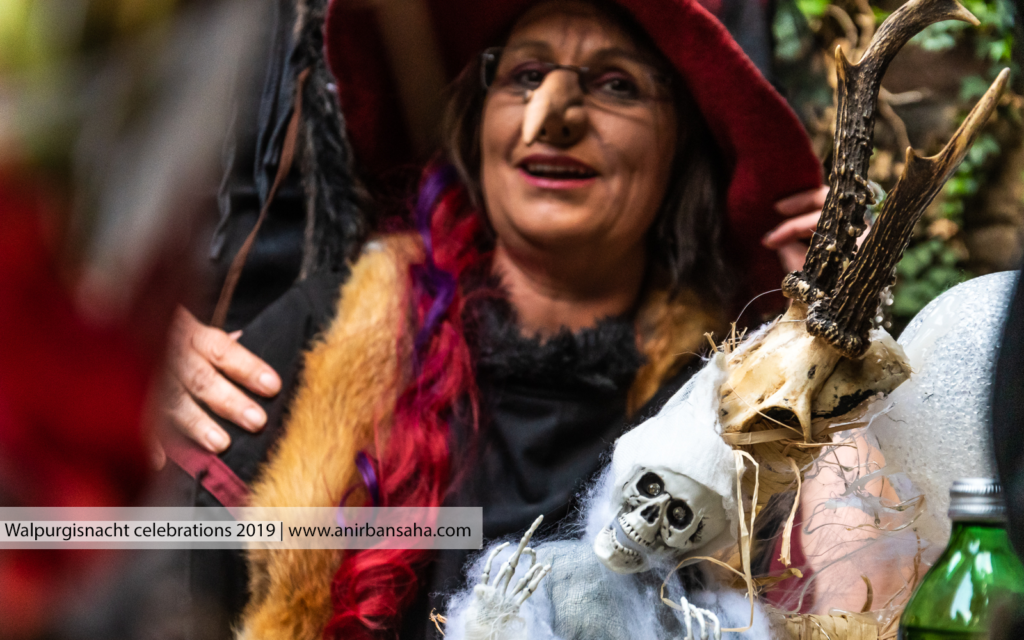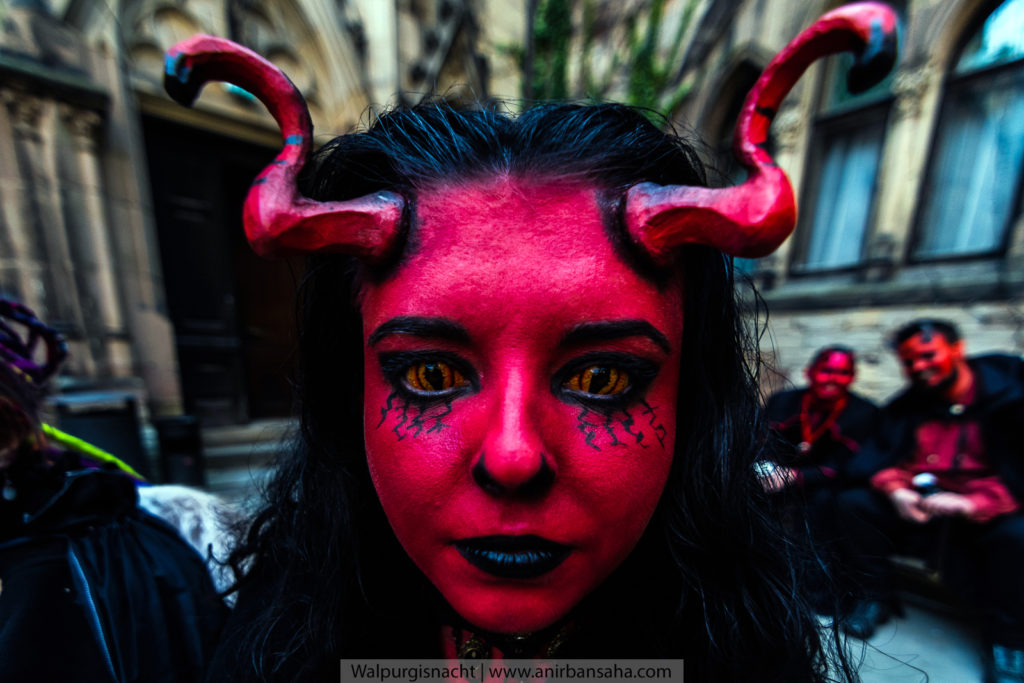The saying goes like this – (medieval Europe) During Walpurgisnacht, the witches party with Satan, in all the darkness of the night. And the people (villagers) light bonfires to keep them away.
And this is what happens – (21st century) the people dress up like witches and Satan, party and drink beer together. That’s enough said about Walpurgisnacht! We went to experience Walpurgisnacht in Wernigerode, Germany.

I’m sure you’ve come across the word “witch”, be it in your childhood fairy tales or “witch hunting” in the news. In India, the “witch” equivalent is “Dayen (Hindi)” or “Daini (Bengali)”, and literal “witch-hunting” is a concern. Especially, if you come from the Bengal-Assam region, you are aware of “Black Magic” and the stories you hear around!
Does that sound interesting to you?
What’s Walpurgisnacht?
“Nacht” (German word) is night in English. Walpurgis refers to St. Walpurga’s. Long before Christianity took over, people believed in multiple Gods and Goddesses (Paganism); and like other similar traditions, they believed in witchcraft and black magic.
Then there was the Holy Roman Empire during which conversions happened, from whatever beliefs they had to Christianity. During the 8th century, St. Walpurga apparently put an end to the pagan sorcery in the region. Her feast day is May 1, so the Walpurgisnacht (St. Walpurga’s eve) falls on 30 April every year.
However, paganism thrived in remote areas like the Harz mountains and the region grew a reputation of being a bastion for these beliefs. Let’s tone it down a bit and let’s say this – there were rumours that there were feasts where witches partied with the Satan and planned what evil they would do the next year. And in order to keep witches away, local villagers used to light bonfire; because, why not?

What is it now?
Witches were a scary concept throughout the 16th and 17th century. There were women who were killed or burnt because they were believed to be witches. However, during the early 19th century as science started creeping into the conscience of people, these people weren’t feared much. In fact, they were reworked into poetry, art and literature by luminaries such as Goethe, in his play ‘Faust’.
Now it is made into an opportunity to party! There are local fairs, parties, gatherings and people across the region come together six months before the Halloween with witch costumes, Satan costumes and what not! Also, this has become a good opportunity to boost tourism in the region.
[modula id=”11251″]Where does this happen?
Harz mountains, very near to Magdeburg (capital of Saxony-Anhalt). If you are from Magdeburg, you take one train to Wernigerode, which is a little more than one hour journey.
In Wernigerode, there is a little party in the center of the marketplace. Also in the market place, there is the Tourist office which, if inquired, will tell you that there are celebrations in the Castle (a lovely one kilometer walk up the hill) and there’s one at Schierke (Brocken hill).
There are other places in the region where these celebrations happen.
What did we do?
While I knew the celebrations are on April 30th, I realised I need to plan only a couple of days before it. So basically, I fucked up. Madhu joined me and we went to Wernigerode only during the late afternoon. We went to the castle and to the marketplace in Wernigerode. Maybe, next year we plan it better and go to the Brocken hill. We did not stay the night 🙁
Budget?
- Train (2 people, day pass): €32
- Schloss-Bahn (2 people, Wernigerode market to castle): €8
- Entry to Castle (2 students): €18
What is it like to be here, as a Bengali?
It’s amusing! While the basic idea of celebrations remain the same, the celebrations are slightly different. My experience has been extremely limited to Magdeburg and the region around: People spend time off the grid, wear costumes, eat good food, drink beer, watch people performing, drink more beer. One thing that is common is the celebration of medieval Germany – shields, wooden swords, helmets, clothes. People like it and it’s fun as well !
As a Bengali, it is more amusing and I’ll tell you why. In Bengali literature, you’ll find around 25 categorised ghosts/evils; one of them is “Dainee” (witches). One of them is “Boba” (dumb) where the person becomes dumb and motionless and hallucinates about witches. The concept of black magic continues to remain and thrive in the region and not many prefer to talk about it. To find people in Germany believe in this is just amusing!
Unrelated PS: I finally found a beer which I liked. That’s an extremely sweet variety, the cherry beer.
Photographs:
[modula id=”11260″]Reading Links:
- The Culture Trip article by Anwesha Ray.
- The Local.de article by Michael Stuchbery.
- History.com article on “History of Witches”
- Celebration in rest of Europe: Daily Translations.com article.
Thank you, Carl and his family, for having invited us to their home during Easter. It was a great weekend and helped us a lot in figuring things out.